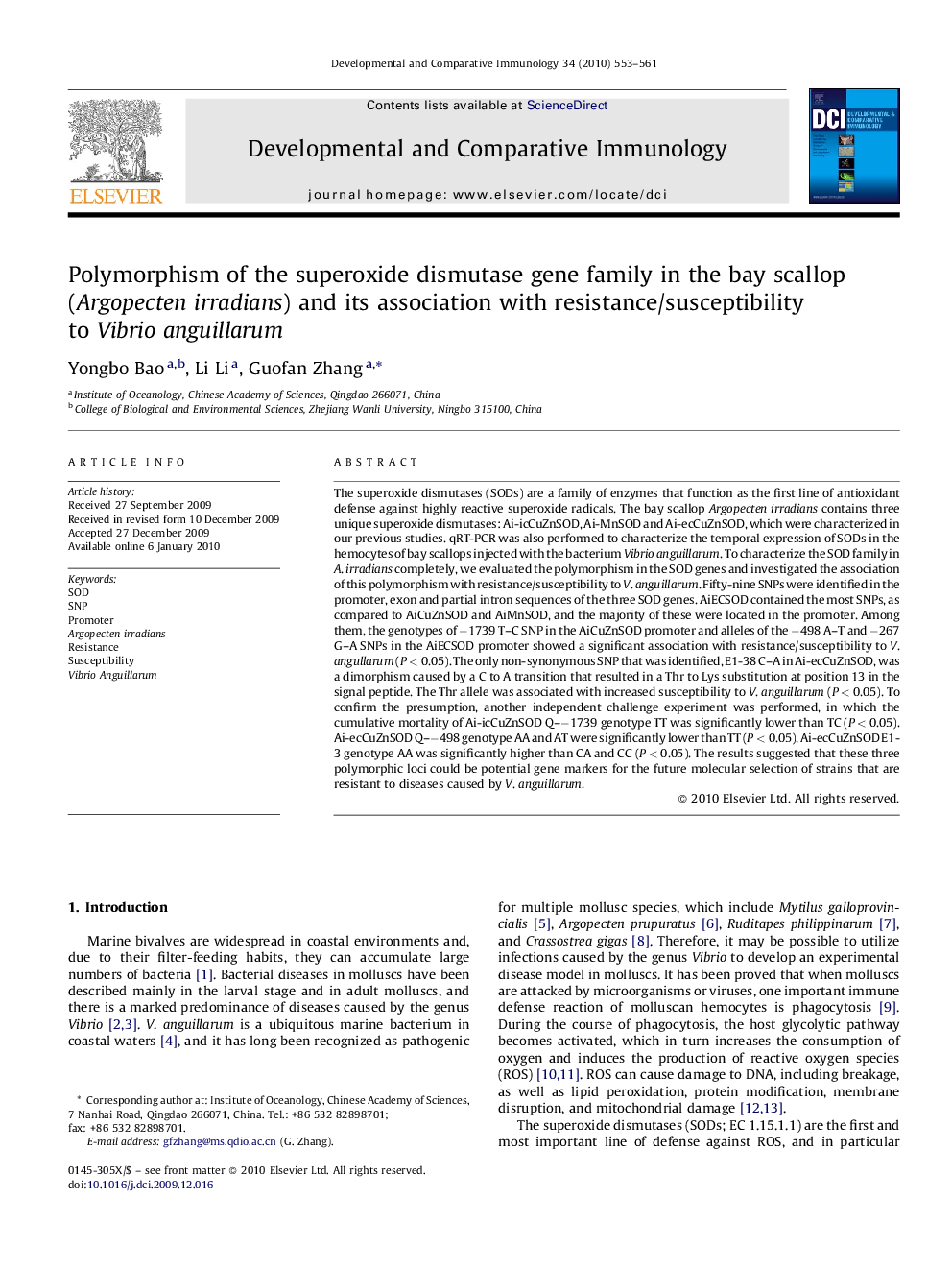| Article ID | Journal | Published Year | Pages | File Type |
|---|---|---|---|---|
| 2429948 | Developmental & Comparative Immunology | 2010 | 9 Pages |
The superoxide dismutases (SODs) are a family of enzymes that function as the first line of antioxidant defense against highly reactive superoxide radicals. The bay scallop Argopecten irradians contains three unique superoxide dismutases: Ai-icCuZnSOD, Ai-MnSOD and Ai-ecCuZnSOD, which were characterized in our previous studies. qRT-PCR was also performed to characterize the temporal expression of SODs in the hemocytes of bay scallops injected with the bacterium Vibrio anguillarum. To characterize the SOD family in A. irradians completely, we evaluated the polymorphism in the SOD genes and investigated the association of this polymorphism with resistance/susceptibility to V. anguillarum. Fifty-nine SNPs were identified in the promoter, exon and partial intron sequences of the three SOD genes. AiECSOD contained the most SNPs, as compared to AiCuZnSOD and AiMnSOD, and the majority of these were located in the promoter. Among them, the genotypes of −1739 T–C SNP in the AiCuZnSOD promoter and alleles of the −498 A–T and −267 G–A SNPs in the AiECSOD promoter showed a significant association with resistance/susceptibility to V. angullarum (P < 0.05). The only non-synonymous SNP that was identified, E1-38 C–A in Ai-ecCuZnSOD, was a dimorphism caused by a C to A transition that resulted in a Thr to Lys substitution at position 13 in the signal peptide. The Thr allele was associated with increased susceptibility to V. anguillarum (P < 0.05). To confirm the presumption, another independent challenge experiment was performed, in which the cumulative mortality of Ai-icCuZnSOD Q−1739 genotype TT was significantly lower than TC (P < 0.05). Ai-ecCuZnSOD Q−498 genotype AA and AT were significantly lower than TT (P < 0.05), Ai-ecCuZnSOD E1-3 genotype AA was significantly higher than CA and CC (P < 0.05). The results suggested that these three polymorphic loci could be potential gene markers for the future molecular selection of strains that are resistant to diseases caused by V. anguillarum.
